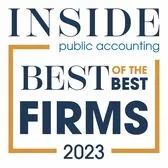With stocks, real estate and alternative assets near all-time highs amid an election year and an uncertain tax landscape, we’ve been deluged with calls from investors seeking tax mitigation strategies. For investors with gains from appreciated assets, we often recommend the federal Opportunity Zone (OZ) program because it’s the most flexible and impactful tax programs that I've ever dealt with in my 40-plus year career.
As of now, the OZ program is set to begin winding down in 2026. Absent pending legislation, September 2027 will be the last chance for taxpayers to roll-over calendar 2026 capital gains and to participate in the OZ program. But there are still plenty of reasons to consider Opportunity Zone investing for tax deferral (and ultimately tax exemption) purposes.
In a nutshell, the OZ program allows investors to defer their capital gains from sales of appreciated real estate, stocks, businesses, personal residences, collectibles, even crypto through 2026, by investing in one of 8,700 distressed areas of the United States via a Qualified Opportunity Fund (QOF). They just need to make their investment within 180 days of the gain reporting date. If the gain is coming through a K-1, the start of the 180-day period can be delayed until March 15 of the year following the gain date. The QOF then deploys those gains into qualifying real estate or an operating business located within one of the 8,700 designated OZ census tracts. Every state has OZ census tracts, which were designated based on relative population in each state. Therefore, California has the most and Wyoming has the least.
By keeping their invested gains in place, investors don’t pay tax on those gains until at least April 2027. Further, if they hold the investment for 10 years, all post-reinvestment appreciation from their original QOF investment will be excluded at the federal level and at the state level in all but six states.
Bipartisan Support
The Opportunity Zone program has always had bipartisan support because it’s designed to spur economic growth in underserved areas. Further, bipartisan legislation is pending to push out the gain deferral period from 2026 to December 31, 2028, and to bring back basis step-ups of 10% and 5% that were part of the original program, but with shorter holding periods to qualify for the basis step-up -- five years for the 5% step up and six years for the 10% step up.
QOFs have raised an estimated $150 billion in equity since the program began in 2018 – far surpassing the most optimistic projections. Total OZ investments are likely much higher due to debt-leverage as well as many unreported projects by family offices and high net worth individuals.
Advantages of Doing Business in an Opportunity Zone
People typically associate OZ funds with real estate development, but about 25% our OZ work involves operating businesses located within one of the 8,700 Opportunity Zone census tracts throughout the U.S. For startups or existing businesses looking to relocate to an Opportunity Zone, there are many considerations beyond attracting investors. Opportunity Zones often have more affordable real estate, rental rates, and operating costs which can help businesses save money.
To become a Qualified Opportunity Zone Business (QOZB), a business must meet the 50% Gross Income Test. There are three “safe harbors” within the regulations and the business must meet only one of them:
- At least 50% of the services performed (based on hours) by its employees or contractors are performed within the qualified opportunity zone (QOZ).
- At least 50% of the compensation paid to QOZ-based employees and independent contractors is performed in the QOZ.
- The core operations and facilities responsible for generating half of the business’s gross revenue are located within a QOZ.
Our firm works with many serial entrepreneurs, including tech gurus and engineers, who are seeing the benefits of selling their family businesses, or rental or personal real estate and then rolling the gains into a QOF and then starting one or multiple businesses within the QOZ. Many entrepreneurs are using a combination of real estate entities and operating businesses in their OZ Funds.
OZ for Homeowners with Big Gains
Many homeowners are selling their residences for substantial gains above what they paid for their properties. But they’re often surprised to receive a hefty capital gains tax bill on the appreciation over this first $500,000 in basis (married) or first $250,000 in basis (single). For instance, a married couple that bought their house for $200,000 thirty years ago and sells it for $1 million today would have an $800,000 gain and would have to pay capital gains tax on $300,000, after claiming the $500,000 Primary Residence exemption ($1 million - $200,000 - $500,000). That’s a tax bill of $45,000 to $60,000 federal alone.
If the homeowners are in good health, then reinvesting the capital gain into a QOF can offer substantial tax savings. In the above example, they still have $700,000 in cash after making the QOF investment, assuming there was no mortgage.
OZ vs. 1031 Exchange
The OZ program differs from a 1031 exchange in several ways. A 1031 exchange can only be used for real estate assets. With the OZ program, gain from the sale of any type of asset – real estate, stocks, bonds, collectibles, crypto. – can be placed into a QOF and receive the tax benefits. Remember, the OZ program only requires the gain to be placed into the QOF and the QOF or a subsidiary QOZB then invests in the property. The investor cannot invest in the property directly.
But that’s the beauty of the OZ program in my experience. You only need to roll the gain (not the full market value of the investment) into the OZ fund to defer 100% of the gain. Example: Let’s say you had $300,000 basis on a piece of land, and you sold it for $1 million (i.e. a $700,000 gain). To get the full deferral under a 1031, you’d generally have to buy a $1 million dollar piece of property. In the OZ world, you would only have to reinvest $700,000 to eliminate 100% of your gain.
Also, under the OZ program, all the depreciation you claim, including cost segregation and everything in the interim period never gets recaptured when you dispose of it after 10 years. That ends up boosting your ROI another 2% to 3% per year. Also, you have time to do a ground-up build in an OZ fund using deferred tax dollars, whereas you generally can’t do a ground-up build under 1031, since you must purchase real estate with an equal or higher value to defer all your 1031 gain.
Installment Sales
If you don't want the complexity of an OZ fund, you can simply do an installment sale. Here you sell your land with a building on it, and you take back a seller note for part of it. What a lot of people don't understand is, even if you don't collect $1 on that note in the year of sale, you still are stuck with 100% of the depreciation recapture that you have on the depreciation you've claimed in the past. Therefore, you must be sure to collect enough to pay the tax on the depreciation recapture.
The good news is you defer the rest of the gain until the cash is collected. Your tax basis is allocated to each tranche of collections that you receive. Also, you do run the risk that capital gain rates could be higher, and that's also a risk in the OZ world. Vice President Harris just announced plans for a 28% capital gain rate (up from 20%) for taxpayers with more than $1 million of income. We don't know the outcome of the upcoming presidential election, so we don’t know what the 2026 tax rates are going to be. Remember, the OZ program defers the capital gain reporting – not the tax.
Delaware Statutory Trust
The Delaware statutory Trust (DST) is another way investors can move or shelter their capital gains. DSTs are essentially pre-packaged 1031s that allow multiple investors to pool their money and invest in actual real estate properties (not funds) without the headaches of having to manage the properties which are often institutional-grade assets such as apartment buildings, office buildings, and shopping centers. This collaboration allows investors to diversify their portfolios and potentially earn higher after-tax returns on their investments.
Conclusion
Regardless of which party wins the White House in November, tax rates are likely to be worrisome for many successful Americans. Especially in a few years, when the multi-trillion-dollar U.S. debt load can no longer be ignored. If you have gains of $1 million or more from any type of appreciated asset, the OZ program – or one of the other tactics explained above -- should be on your short-list of strategies to consider. Doing good for others while doing well for yourself and your family. That’s a win-win all around – exactly the intention of the bipartisan drafters of the OZ program.


